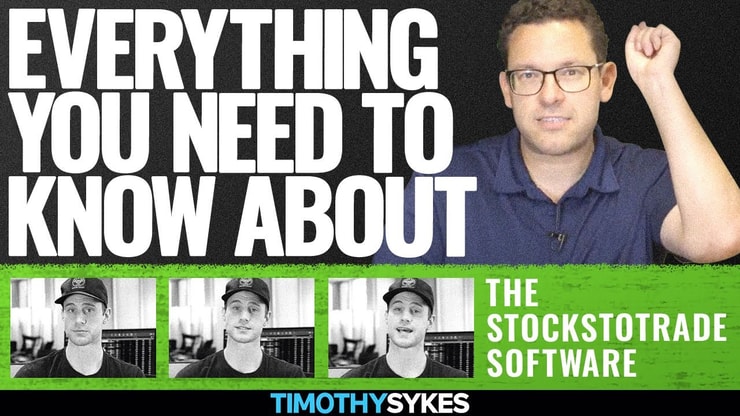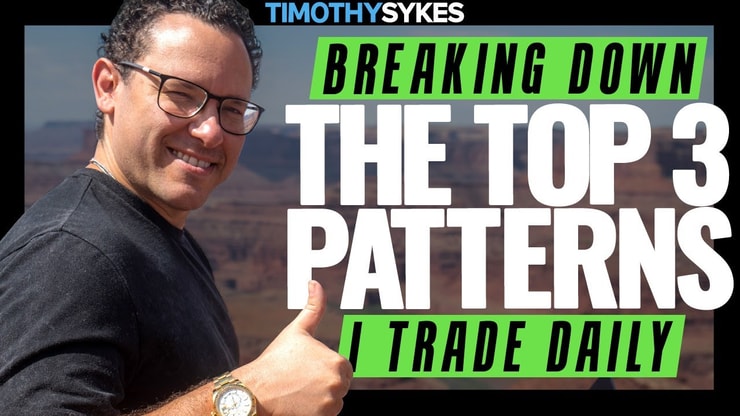*Written by AI, Edited by Humans
The TTM Squeeze Indicator is a volatility and momentum indicator that helps traders identify market direction and potential breakouts. Created by John Carter of Simpler Trading, this tool combines Bollinger Bands® and Keltner Channels to gauge market energy. If you’re looking to add a powerful tool to your trading arsenal, understanding the TTM Squeeze is a must. This article will break down what the TTM Squeeze is, how to use it, and how it compares to other indicators.
Table of Contents
- 1 What Is TTM Squeeze Indicator?
- 2 How To Read the TTM Squeeze Indicator
- 3 How To Trade the TTM Squeeze Indicator
- 4 How To Efficiently Use the TTM Squeeze Indicator
- 5 TTM Squeeze Indicator vs. Other Popular Technical Indicators
- 6 Charting with the TTM Squeeze Indicator
- 7 How To Identify TTM Squeeze
- 8 Benefits of Using the TTM Squeeze
- 9 What Is the Best Timeframe for TTM Squeeze?
- 10 Frequently Asked Questions
- 10.1 How Do I Plot the TTM Squeeze Indicator?
- 10.2 How Should I Trade the TTM Squeeze Indicator?
- 10.3 What Indicator Goes Best with TTM Squeeze?
- 10.4 How Do I Setup TTM Squeeze Indicator?
- 10.5 What Is the Momentum Oscillator in TTM Squeeze Indicator?
- 10.6 What Should Be Considered for Trades and Actions in TTM Squeeze?
- 10.7 How Do Specific Strategies Like ATR and Straddle Work in TTM Squeeze?
- 10.8 How Do Account and Volume Factors Impact TTM Squeeze Trading?
What Is TTM Squeeze Indicator?
The TTM Squeeze Indicator is a trading tool that combines the power of Bollinger Bands® and Keltner Channels. It’s designed to help traders identify periods of consolidation in the market and anticipate potential breakouts. This indicator is widely used in various markets, including stocks and futures, to gauge both volatility and momentum.
How Does TTM Squeeze Work?
The TTM Squeeze works by plotting dots and a histogram on a chart. When the Bollinger Bands® are inside the Keltner Channels, the indicator signals a “squeeze” condition. A squeeze is a period of low volatility and is often followed by a significant market move. The color of the dots and histogram bars indicate the direction of the momentum.
How To Read the TTM Squeeze Indicator
Reading the TTM Squeeze is straightforward. The indicator uses dots and histogram bars to display market conditions. When the dots are red, it indicates a squeeze is on, and when they turn green, the squeeze has fired, signaling a potential move. The histogram bars also change color to indicate momentum direction, making it easier for traders to interpret the data.
How To Trade the TTM Squeeze Indicator
Trading with the TTM Squeeze involves waiting for the indicator to signal a squeeze and then watching for the squeeze to fire. Once the dots turn green and the histogram bars also show a shift, that’s your cue to enter a trade. However, like anything in trading, there’s risk involved. Always use stop-loss orders and manage your risk carefully.
It all comes down to your trading platform.
When it comes to platforms, StocksToTrade is first on my list. It’s a powerful trading platform that integrates with most major brokers. I helped to design it, which means it has all the trading indicators, news sources, and stock screening capabilities that traders like me look for in a platform.
Grab your 14-day StocksToTrade trial today — it’s only $7!
How To Efficiently Use the TTM Squeeze Indicator
Efficiency in using the TTM Squeeze comes from practice and understanding its components. Use it in conjunction with other indicators and trading tools for best results. For example, you can use moving averages to confirm the direction of the potential breakout. Also, consider the timeframe; some traders find success using it on shorter time frames, while others prefer longer ones.
Mastering your trading psychology is crucial for efficient use of any indicator, including the TTM Squeeze. Understanding your emotional triggers can help you make more rational decisions, especially when the market is volatile. For tips on how to improve your trading psychology, check out this in-depth guide.
TTM Squeeze Indicator vs. Other Popular Technical Indicators
The TTM Squeeze is unique because it combines elements of both volatility and momentum to provide a more comprehensive view of the market.
Compared to Moving Average
While moving averages give you a smoothed-out view of price over a specific period, the TTM Squeeze offers insights into both volatility and momentum, making it a more versatile tool.
Compared to RSI
The Relative Strength Index (RSI) focuses solely on price momentum, but the TTM Squeeze also incorporates volatility through its use of Bollinger Bands® and Keltner Channels, offering a broader perspective.
Charting with the TTM Squeeze Indicator
Charting with the TTM Squeeze is about more than just watching dots and bars. It’s about understanding the market’s energy. The squeeze condition shows you when the market is building energy, and the histogram bars help you gauge that energy’s direction. Platforms like TD Ameritrade’s thinkorswim offer the TTM Squeeze as a built-in indicator, making it accessible for most traders.
How To Identify TTM Squeeze
Identifying a TTM Squeeze is all about watching for those red dots to turn green and the histogram bars to change direction. But don’t just jump in blindly. Confirm the signal with other indicators and maybe even a quick scan of market news. The more information you have, the better your trade setup will be.
It’s also worth exploring other indicators that can help you identify market direction and potential breakouts. Some traders use the concept of “outperform” to gauge stock performance. To understand what “outperform” means in stocks, you can read this article.
Benefits of Using the TTM Squeeze
The benefits of using the TTM Squeeze include its ability to identify market direction and potential breakouts effectively. It’s a versatile tool that can be used in various markets and time frames. Plus, its combination of volatility and momentum components provides a more comprehensive market analysis.
Another strategy that traders often use is “sell the rip,” which involves selling a stock after a rapid upward movement. This strategy can be particularly useful when trading with the TTM Squeeze Indicator. For a deeper dive into the “sell the rip” strategy, here’s a comprehensive guide.
What Is the Best Timeframe for TTM Squeeze?
The best timeframe for using the TTM Squeeze can vary depending on your trading strategy. Day traders might find shorter time frames like 15-minute or 1-hour charts more useful, while swing traders might prefer daily or weekly charts. The key is to experiment and find what works best for you.
It isn’t a silver bullet for your trading plan — but the TTM Squeeze is one of the many topics you should learn as part of your trading education!
Trading isn’t rocket science. It’s a skill you build and work on like any other. Trading has changed my life, and I think this way of life should be open to more people…
I’ve built my Trading Challenge to pass on the things I had to learn for myself. It’s the kind of community that I wish I had when I was starting out.
We don’t accept everyone. If you’re up for the challenge — I want to hear from you.
Apply to the Trading Challenge here.
Trading is a battlefield. The more knowledge you have, the better prepared you’ll be.
Do you use the TTM squeeze in your trading strategy? Let me know in the comments — I love hearing from my readers!
Frequently Asked Questions
How Do I Plot the TTM Squeeze Indicator?
Plotting the TTM Squeeze Indicator is generally straightforward on most trading platforms. On thinkorswim, for example, you can add it from the list of available indicators. Once added, you’ll see the dots and histogram bars on your chart.
How Should I Trade the TTM Squeeze Indicator?
Trade the TTM Squeeze by waiting for the indicator to signal a squeeze (red dots) and then watching for the squeeze to fire (green dots and changing histogram bars). Always use other indicators for confirmation and set appropriate stop-loss and take-profit levels.
What Indicator Goes Best with TTM Squeeze?
Many traders use moving averages or RSI along with the TTM Squeeze for additional confirmation. The choice of additional indicators can depend on your trading style and the market you’re trading in.
How Do I Setup TTM Squeeze Indicator?
Setting up the TTM Squeeze Indicator involves adding it to your chart on your trading platform. On platforms like thinkorswim, it’s as simple as selecting it from the list of indicators. Once added, you can customize its settings according to your trading needs.
What Is the Momentum Oscillator in TTM Squeeze Indicator?
The momentum oscillator is a crucial component of the TTM Squeeze Indicator. It works alongside squeeze fires and the volatility component to identify trading opportunities. When the line in the momentum oscillator turns light blue, it may indicate a favorable performance, signaling a possible security investment opportunity.
What Should Be Considered for Trades and Actions in TTM Squeeze?
In TTM Squeeze, trades and actions should be taken with a thorough understanding of the associated risks. Knowing the prices where potential losses could occur is vital, as well as your exit options if they do. Also, keeping track of profits and analyzing price changes can help improve the performance number of your trades.
How Do Specific Strategies Like ATR and Straddle Work in TTM Squeeze?
ATR (Average True Range) and strategies like straddle and spread are often used with the TTM Squeeze Indicator. The default settings can be adjusted for specific exit points. You can also opt for strategies like buying to cover or going naked, depending on your risk to reward ratio.
How Do Account and Volume Factors Impact TTM Squeeze Trading?
When using the TTM Squeeze Indicator, your account should be well-managed, considering the position size and potential gain or loss. Members within a trading community can invest or sell based on volume and limit settings. A higher fill rate can sometimes indicate a stronger trading opportunity.





Leave a reply